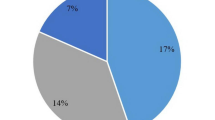Abstract
Legal translation is viewed as “a category in its own right” (Weston in An English reader’s guide to the French legal system. Berg, Oxford, (1991, p. 2). It is a kind of translation of the language used for specific purposes (Zhao in J Transl Stud 4:28, 2000). Legal translation requires accuracy in relaying the substance of the message, while respecting the form thereof as well as the genius of the target language (Zhao in J Transl Stud 4:19, 2000; Sarcevic in New approach to legal translation. Kluwer Law International, Hague, 1997, p. 52). As generally accepted worldwide, precision is deemed of paramount importance in legal translation. With this in mind, the present paper deals chiefly with the concept of how legal translation can correctly be tested in order to ensure precision and validity for application and implementation. The paper will argue that the main goal of legal translation and the major criterion against which the precision of legal translation should be tested is to reproduce the same legal effect in the target text as that conveyed in the source text regardless of the method(s) used in the translation process.
Similar content being viewed by others
References
AlBahūtī, M. 1636. Kashshāf alqināʿ ʿan matn alʾiqnāʿ. Vol. III. Cairo: Almaṭbaʿa Alʿāmira Alsharqiyya.
AlBahūtī, M. 1636. Sharḥ Muntahā Alʾirādāt. Vol. II. Almadīna Almunwwara: Almaktaba Alsalafiyya.
Bellos, D. 2011. Is that a fish in your ear? Translation and the meaning of everything. London: Penguin Books Ltd.
Feng, S. 1993. Faithful to what? Retrospect on the debates concerning translation in modern China. International Social Science Journal 1: 97–106.
Garzone, G. 2000. Legal translation and functionalist approaches: A contradiction in terms? ASTTI/ETI, 395–414.
Groffier, E. 1990. La langue du droit. Meta 35(2): 314–331.
Hardy, J. 1962. The interpretation of plurilingual texts by international courts and tribunals. The British Yearbook of International Law 1961(37): 72–155.
Harvey, M. 2000. A beginner’s course in legal translation: The case of culture-bound terms. ASTTI/ETI, 357–369.
Harvey, M. 2002. What’s so special about legal translation? Meta, XLVII(2), 177–185.
Hjort-Pedersen, M., and D. Faber. 2001. Lexical ambiguity and legal translation: A discussion. Multilingua 20(4): 379–392.
Kasirer, N. 2000. Francois Gény’s libre recherche scientifique as a guide for legal translation. ASTTI/ETI 57–85.
Kuner, C. 1991. The interpretation of multilingual treaties: Comparison of texts versus the presumption of similar meaning. Comparative Law Quarterly 40(4): 953–964.
Poon, E.W.Y. 2005. The cultural transfer in legal translation. International Journal for the Semiotics of Law 18(3–4): 307–323.
Rooney, K. (ed-in-chief). 1999. Encarta world English dictionary. London: Bloomsbury Publishing Plc.
Sarcevic, S. 1989. Conceptual dictionaries for translation in the field of law. International Journal of Lexicography 2(4): 277–293.
Sarcevic, S. 1997. New approach to legal translation. The Hague/London/Boston: Kluwer Law International.
Sarcevic, S. 2000, February. Legal translation and translation theory: A receiver-oriented approach. Paper presented at legal translation: History, theory/ies and practice, International Colloquium, Geneva, Switzerland.
Schroth, P. 1986. Legal translation. American Journal of Comparative Law 47–65.
Snell-Hornby, M. 1990. Linguistic transcoding or cultural transfer? A critique of translation theory in Germany. In Translation, history, and culture, ed. S. Bassnett, and A. Lefevere, 79–86. London: Pinter.
Weisflog, W.E. 1987. Problems of legal translation. Swiss Report Presented at the XIIth International Congress of Comparative Law 179–219.
Weston, M. 1983. Problems and principles in legal translation. The Incorporated Linguist 22(4): 207–211.
Weston, M. 1991. An English reader’s guide to the French legal system. Oxford: Berg.
Zhao, Y. 2000. Legal translation in the legislative genre. Journal of Translation Studies 4: 19–44.
Author information
Authors and Affiliations
Corresponding author
Rights and permissions
About this article
Cite this article
Alwazna, R.Y. Testing the Precision of Legal Translation: The Case of Translating Islamic Legal Terms into English. Int J Semiot Law 26, 897–907 (2013). https://doi.org/10.1007/s11196-013-9331-z
Published:
Issue Date:
DOI: https://doi.org/10.1007/s11196-013-9331-z




